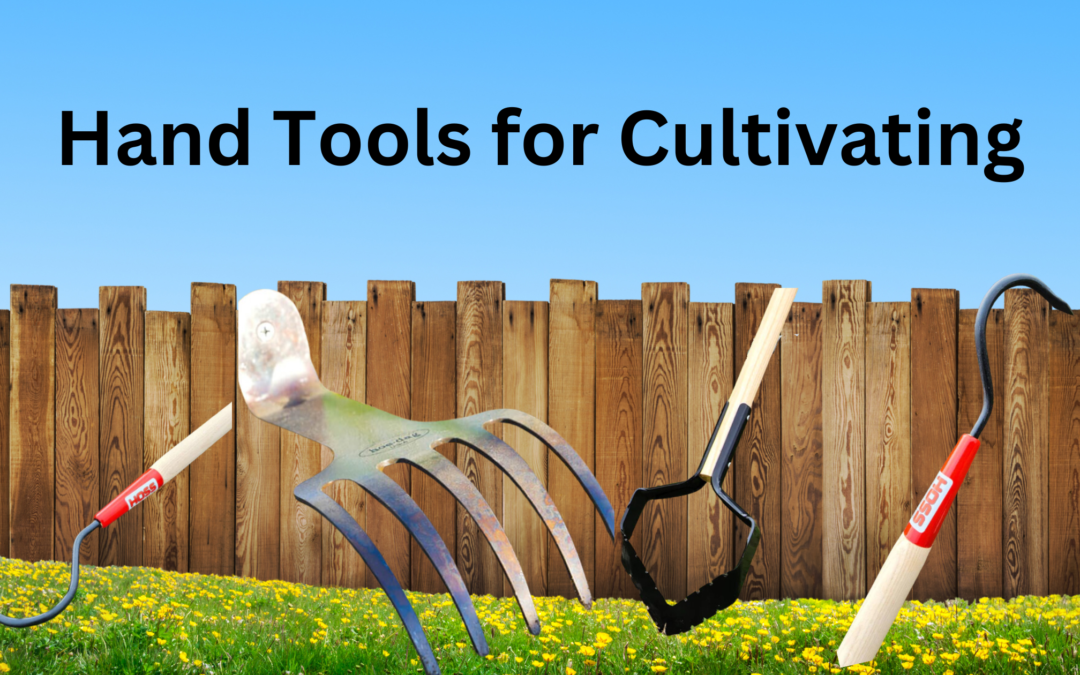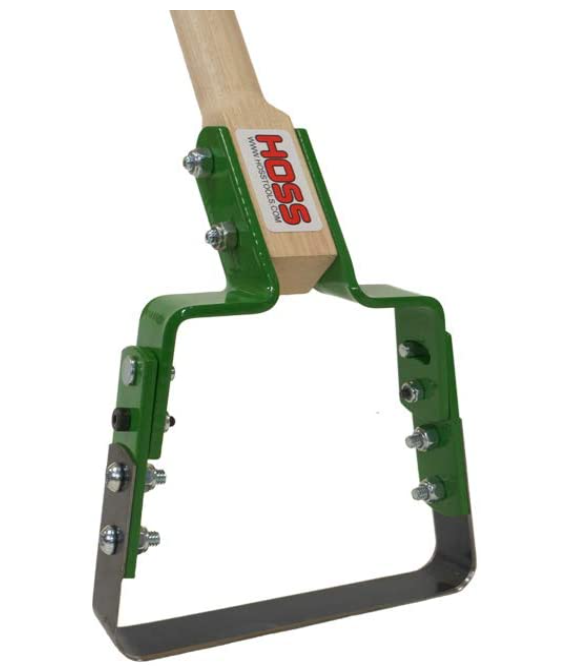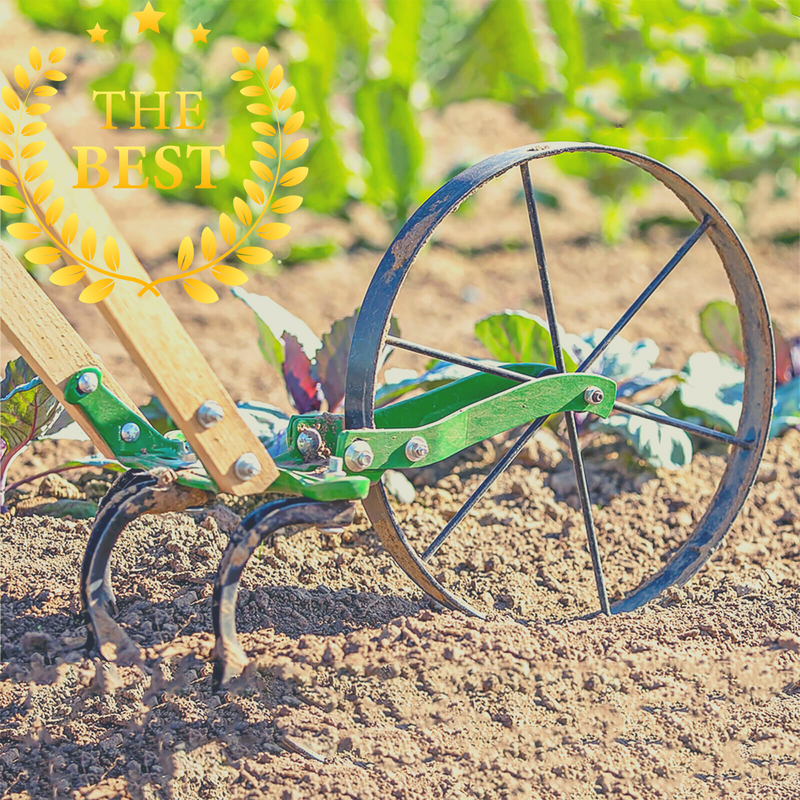Choosing the Right Cultivating Tool
Hand Tools for Urban Gardeners
Hand tools are best for urban gardeners for many reasons. First, they do not require a lot of room to store. Second, the maintenance is minimal. Third, the cost of each tool is reasonable. Most importantly, hand tools are easy to work around tight places near your house or in confined raised bed gardens. Mechanized farming equipment is too big to use in backyard gardens. There is no reason to incur the costs of a BCS hand tractor or something larger unless you are farming long rows as a market gardener.
A good set of hand tools is all that is needed to cultivate the land and keep it weed-free so your vegetables and fruits thrive.
Tools for Different Jobs
Growers that have larger in-ground vegetable row gardens will likely benefit from having multiple cultivating tools. While backyard gardeners with a couple of raised beds may be best suited with a single stirrup hoe or single tine cultivator. These are the best cultivating tools in our garden shed and why we like having them available for growing in our food forest.
Push Pull Hoe
The push pull hoe is very effective at weed control. This hoe is designed to be “working” in both directions. This makes working in the garden very efficient. I have found the push pull hoe excels for keeping the paths in between garden rows clean of weeds. The smaller head design allows it to work close to garden borders. As well as, in and around the rows of vegetables. If you have grown long rows of lettuce or other salad greens you know it is essential to work close to the plants to keep the bed weed-free. This tool is designed for this work.
Hoss Stirrup Hoe
The Hoss stirrup hoe is easily the best stirrup hoe on the market. Stirrup hoes also sometimes referred to as hula hoes can tackle heavier weed growth, large clumps of weeds, and tougher soils. If you have an overgrown garden bed to prep in the early spring using the stirrup hoe for initial clean-up is excellent. This sturdy tool is a workhorse. If you can only afford a single garden tool for cultivating the soil get a stirrup hoe.
Single Tine Cultivator
Single-tine cultivators excel working close to the roots of vegetables. This tool allows the gardener to precisely remove all weed growth directly adjacent to growing vegetables. The long handled single tine cultivator allows for walking down the rows of the garden and eliminating weeds as you go. Quickly remove weeds at the thread stage and slightly larger by lightly disturbing the soil. This tool causes minimal disruption to the root zone of the plants.
Short Single Tine Cultivator
The short-handle single tine cultivator is a great option for gardeners with tight spaces to work in or smaller plots. The short handle is ergonomically comfortable to wield with one or two hands without causing fatigue. Many gardeners do not use large tools for extended periods due to discomfort and pain. This tool is light enough to use long enough to get the job done in your backyard kitchen garden.
Hand Rake
One of the biggest benefits of using a cultivating tool is breaking up tough ground. The Hand Rake with its 5 sturdy tines is designed for digging in a few inches and breaking up compacted soil. By loosening up the top layer of the soil with a hand rake, newly planted plants will thrive. As a result, their roots will grow deep and get established. The soil disruption allows any compost or organic material you add to the garden to get incorporated with the native soil. This feeds the microbes living in the soil which then support your growing garden.
Wheel Hoe for Large Gardens
Gardens with long rows can utilize a wheelhoe for multiple things. Wheel hoes are designed to prepare garden beds for seeding or transplant. However, they also have attachments for creating furrows, seeding, and even tilling the garden. Learn more about the best wheel hoe on the market.
Why Cultivating is Important for Gardens
Cultivating the soil is essential to maintain a healthy garden for growing fruits and vegetables. The benefits are immense. Here are a few reasons why we cultivate our backyard garden beds in between crops and at the beginning and end of the growing season.
- Root Development: Compacted soil is difficult for plant roots to grow through. When you cultivate or till the top layers of the garden plant roots quickly establish deeply where they need to be to capture essential nutrients and minerals.
- Improve Water Drainage: By loosening compacted soil water can drain easily to the depths plant roots grow.
- Control Invasive Weeds: Using a cultivating tool can break the seed cycle of weed plants. Thus, keeping them from being established. As a result, it is possible to grow in a garden with minimal weeds after several years of continuous cultivation. Stopping weeds before they successfully germinate is the best way to prevent weeds in the garden. A stirrup hoe and a single tine cultivator excel at separating weeds from their roots at the thread stage before they establish and grow.
- Improved Soil Health: The cultivation process encourages air penetration deeper into the ground. This allows good bacteria to thrive in the soil. An increase in soil microbe activity means the compost and other organic matter in the garden breaks down quickly. This material turns into nutrients and minerals available for the plants.
Cultivating Equals Healthy Gardens
The best time to cultivate your garden is in the early spring a few weeks before seeding or transplanting. The first cultivation for the season should be rigorous and include adding compost and organic fertilizer to the soil. Thereafter, light cultivation before each planting ensures a clean bed for each crop.
Depending on the amount of weed seeds in your garden weeding may be a weekly chore or less frequent. You are likely walking your garden regularly. When weeds are spotted use one of your cultivating tools to quickly address the issue before they get established.
The worst thing to avoid is allowing weeds to go to seed. If weeds go to seed and spread you can count on a huge problem for years to come in your gardens. Stay diligent with cultivating the soil and weeding and the weed problems do lessen with time. However, they never go away completely, weed seeds fly in and get dropped by animals all the time.










Recent Comments